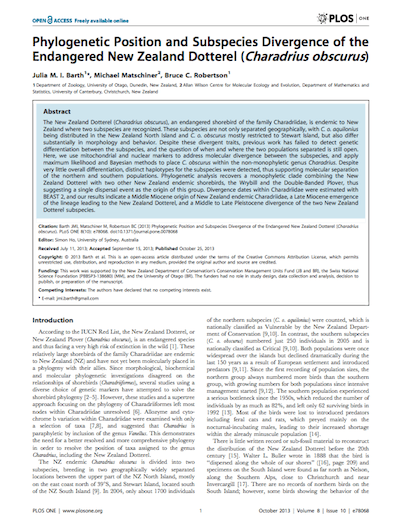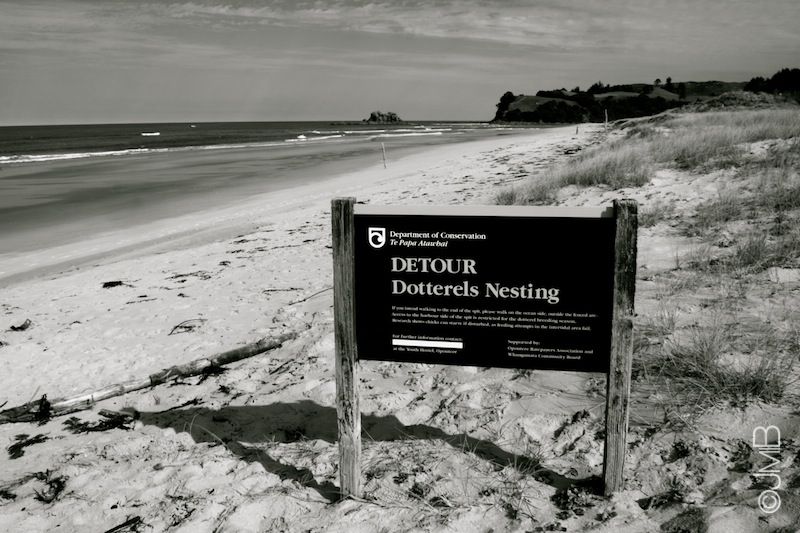New Zealand dotterel (Charadrius obscurus)
Postdoctoral project at the University of Otago, New Zealand.
The New Zealand dotterel (Charadrius obscurus), an endangered shorebird of the family Charadriidae, is endemic to New Zealand
where two subspecies are recognized. These subspecies are separated not only geographically, with C. o. aquilonius being distributed
in the New Zealand North Island and C. o. obscurus mostly restricted to Stewart Island, but also differ substantially in morphology
and behavior. Despite these divergent traits, previous work has failed to detect genetic differentiation between the subspecies, and the
question of when and where the two populations separated is still open.
I used mitochondrial and nuclear markers to address molecular divergence between the subspecies, and applied maximum likelihood and Bayesian methods to place C. obscurus within the non-monophyletic
genus Charadrius. Despite very little overall differentiation, distinct haplotypes for the subspecies were detected, thus supporting
molecular separation of the northern and southern populations. Phylogenetic analysis recovers a monophyletic clade combining the New Zealand
dotterel with two other New Zealand endemic shorebirds, the Wrybill and the Double-Banded plover, thus suggesting a single dispersal event as
the origin of this group. Divergence dates within Charadriidae were estimated with BEAST 2, and our results indicate a Middle Miocene origin
of New Zealand endemic Charadriidae, a Late Miocene emergence of the New Zealand dotterel, and a Middle to Late Pleistocene divergence of the
two New Zealand dotterel subspecies.
Publications
 |
Barth JMI, Matschiner M, Robertson BC. Phylogenetic position and subspecies divergence of the endangered New Zealand
dotterel (Charadrius obscurus). PLoS ONE (2013) 8: e78068. doi: 10.1371/journal.pone.0078068. |


